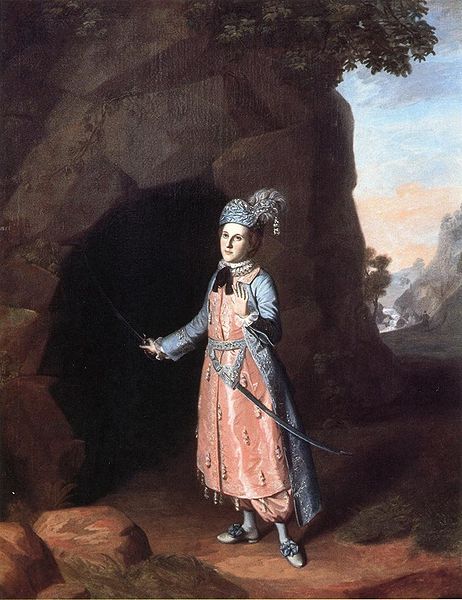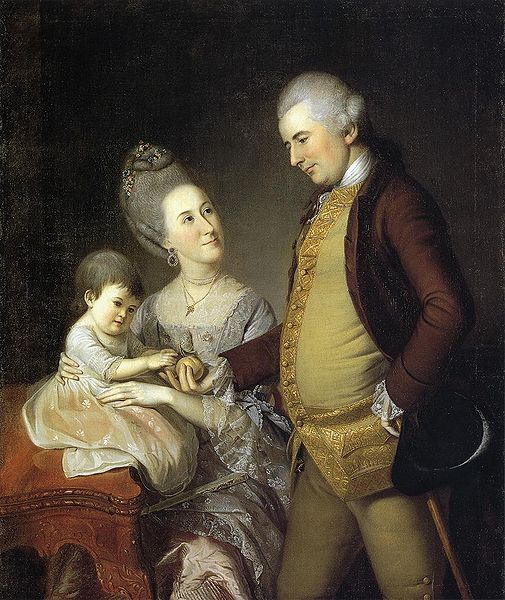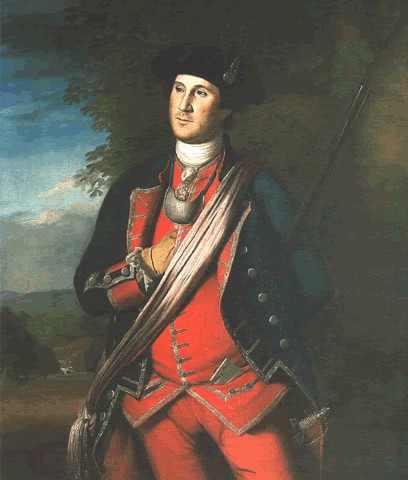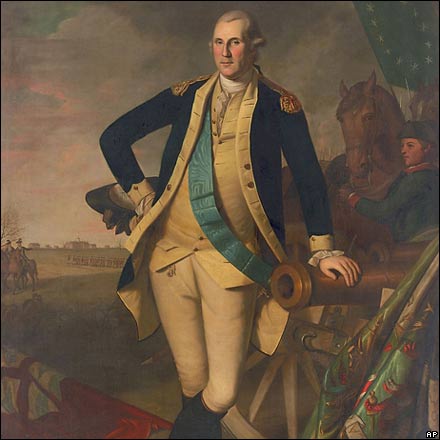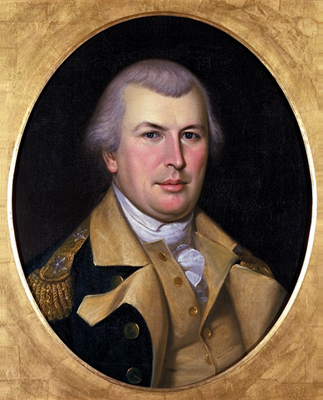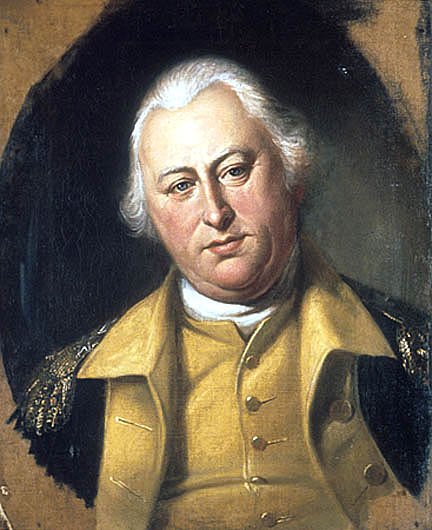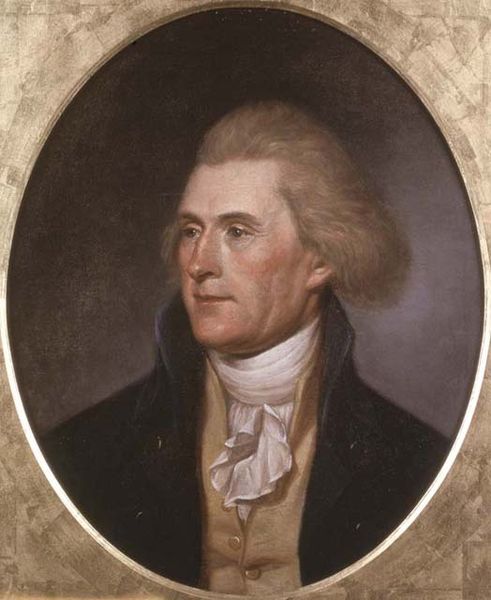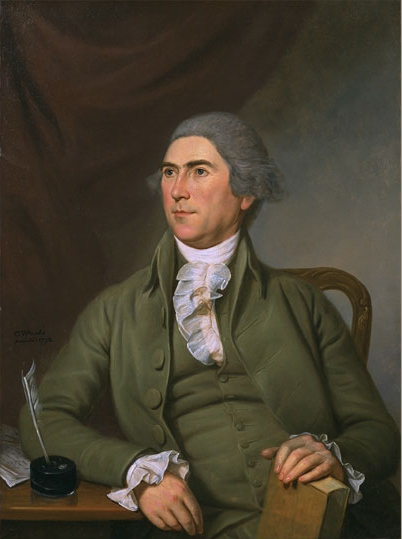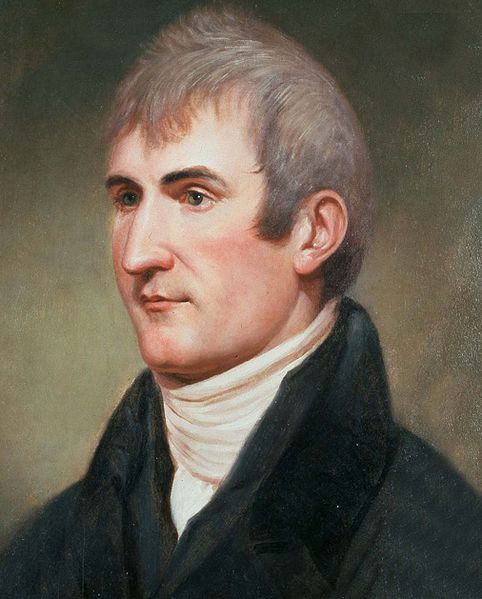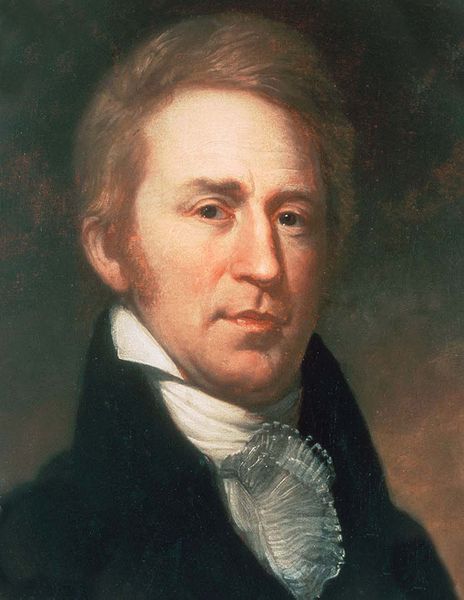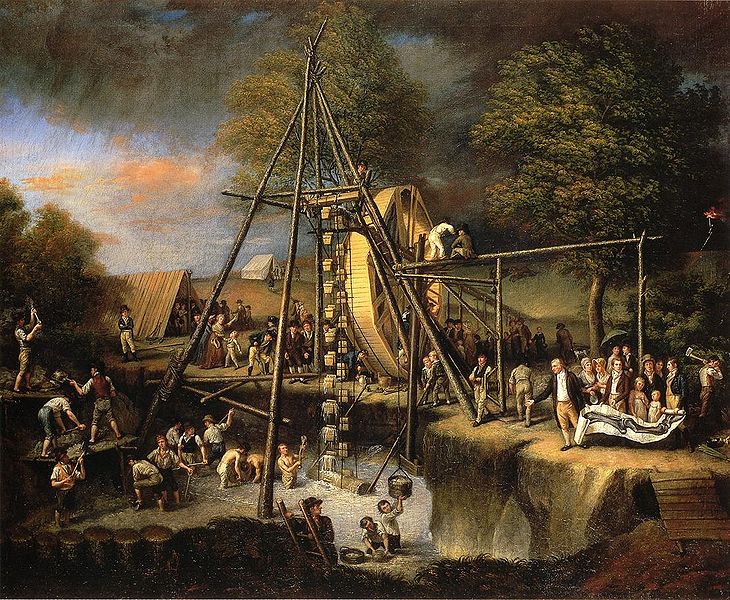<Back to Index>
- Mathematician Hermann Günther Grassmann, 1809
- Painter Charles Willson Peale, 1741
- Empress and Autocrat of All the Russias Catherine I, 1684
PAGE SPONSOR
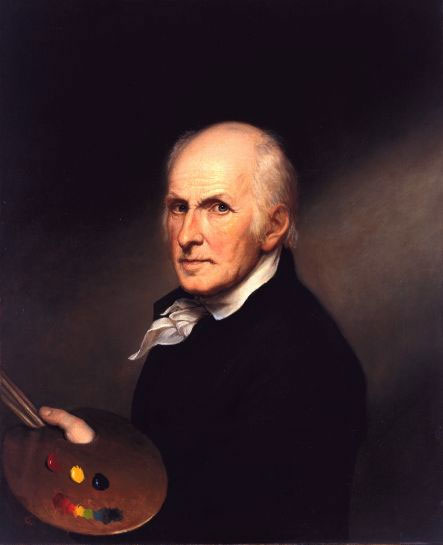
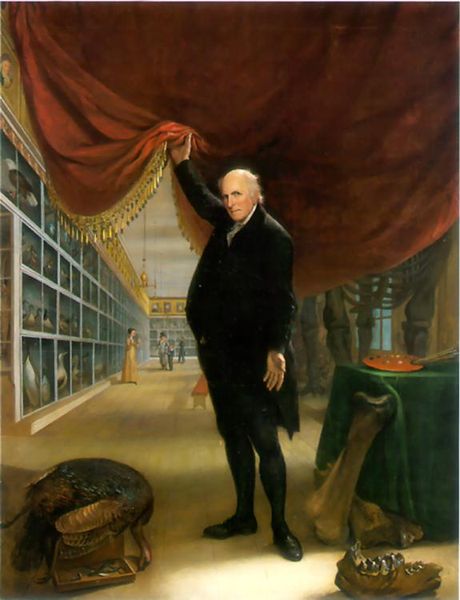
Charles Willson Peale (April 15, 1741 – February 22, 1827) was an American painter, soldier and naturalist.
Peale was born in Chester, Queen Anne's County, Maryland, the son of Charles Peale and his wife Margaret. In 1749 his brother James Peale (1749 – 1831) was born. Charles became an apprentice to a saddle maker when he was thirteen years old. Upon reaching maturity, he opened his own saddle shop; however, when his Loyalist creditors discovered he had joined the Sons of Liberty, they conspired to bankrupt his business.
Finding that he had a talent for painting, especially portraiture, Peale studied for a time under John Hesselius and John Singleton Copley. John Beale Bordley and friends eventually raised enough money for him to travel to England to take instruction from Benjamin West. Peale studied with West for two years beginning in 1767, afterward returning to America and settling in Annapolis, Maryland. There, he taught painting to his younger brother, James Peale, who in time also became a noted artist.
Peale's enthusiasm for the nascent national government brought him to the capital, Philadelphia, in 1776, where he painted portraits of American notables and visitors from overseas. His estate, which is on the campus of La Salle University in Philadelphia, can still be visited. He also raised troops for the War of Independence and eventually gained the rank of captain in the Pennsylvania militia by 1777, having participated in several battles. While in the field, he continued to paint, doing miniature portraits of various officers in the Continental Army. He produced enlarged versions of these in later years. He served in the Pennsylvania state assembly in 1779 – 1780, after which he returned to painting full-time.
Peale was quite prolific as an artist. While he did portraits of scores of historic figures (such as James Varnum, John Hancock, Thomas Jefferson, and Alexander Hamilton), he is probably best known for his portraits of George Washington. The first time Washington ever sat for a portrait was with Peale in 1772, and there would be six other sittings; using these seven as models, Peale produced altogether close to 60 portraits of Washington. In January 2005, a full length portrait of "Washington at Princeton" from 1779 sold for $21.3 million dollars, setting a record for the highest price paid for an American portrait.
One of his most celebrated paintings is The Staircase Group (1795), a double portrait of his sons Raphaelle and Titian painted in the trompe l'oeil style. It is in the collection of the Philadelphia Museum of Art.
Around
1804
he
obtained the American patent rights to the polygraph from its inventor John
Isaac
Hawkins, about the same time as the purchase of one by Thomas
Jefferson. Peale and Jefferson collaborated on refinements to
this
device, which enabled a copy of a handwritten letter to be produced
simultaneously with the original. Peale
had
a great interest in natural
history, and organized the first U.S. scientific expedition in
1801. These two major interests combined in his founding of what became
the Philadelphia Museum, and was later renamed the Peale
Museum. This
museum
is considered the first. It housed a diverse collection of
botanical, biological, and archaeological specimens. Most notably, the
museum contained a large variety of birds which Peale himself acquired,
and it was the first to display North American mastodon bones (which
in
Peale's time were referred to as mammoth bones; these common names
were amended by Georges
Cuvier in 1800, and
his proposed usage is that employed today). The
display
of the "mammoth" bones entered Peale into a long standing
debate between Thomas
Jefferson and Comte
de
Buffon. Buffon argued that Europe was superior to the Americas
biologically, which was illustrated through the size of animals found
there. Jefferson referenced the existence of these "mammoths" (which he
believed still roamed northern regions of the continent) as evidence
for a greater biodiversity in America. Peale's display of these bones
drew attention from Europe, as did his method of re-assembling large
skeletal specimens in three dimensions. The
museum
was among the first to adopt Linnaean
taxonomy. This system drew a stark contrast between Peale's
museum
and his competitors who presented their artifacts as mysterious
oddities of the natural world. The
museum
underwent several moves during its existence. At various times
it was located in several prominent buildings including Independence
Hall and the
original home of the American
Philosophical
Society. The
museum would eventually fail in large part because Peale was
unsuccessful at obtaining government funding. After his death, the
museum was sold to, and split up by, showmen P.
T.
Barnum and Moses
Kimball. In
1762,
Peale married Rachel Brewer (1744 – 1790), who bore him ten children. The
sons included Raphaelle
Peale (1774 – 1825), Rembrandt
Peale (1778 – 1860),
and Rubens
Peale (1784 – 1865).
Among
the daughters: Angelica Kauffman Peale married Alexander
Robinson, Priscilla Peale married Dr. Henry Boteler, and Sophonisba
Peale married Coleman Sellers. In
1791,
he married Elizabeth de Peyster (d. 1804), his second wife, with whom
he had another six children. One son, Franklin Peale, born on October
15, 1795, became the Chief Coiner at the Philadelphia Mint. His last
son, Titian
Ramsay
Peale (1799 – 1885),
became an important naturalist and pioneer in photography. Their
daughter, Elizabeth De Peyster Peale (1802 – 57), married William Augustus Patterson (1792 – 1833) in 1820. Hannah
More,
a Quaker from Philadelphia, became
Peale's third wife in 1804. She helped raise the children from his
previous two marriages. Peale
could
accurately be described as a "Renaissance
man", having
expertise
not
only in painting, but also in other diverse fields, such
as carpentry, dentistry, optometry, shoemaking,
and taxidermy.
In
1802,
John Hawkins patented the second official physiognotrace, a
mechanical
drawing device, and partnered with Peale to market it to
prospective buyers. Peale sent a watercolor sketch of the
physiognotrace, along with a detailed explanation, to Thomas Jefferson.
The drawing now sits with the Jefferson Papers in the Library of
Congress. Peale wrote several books,
among which were An
Essay on Building Wooden Bridges (1797) and An Epistle to a
Friend on the Means of Preserving Health (1803). Peale named all of
his sons for artists or scientists, and taught them to paint. Three of
them, Rembrandt, Raphaelle, and Titian, became noted artists in their
own right. He was
the brother-in-law of Nathaniel
Ramsey, a delegate to the Congress
of
the
Confederation. The World
War
II Liberty
Ship SS Charles
Willson
Peale was
named in his honor.
